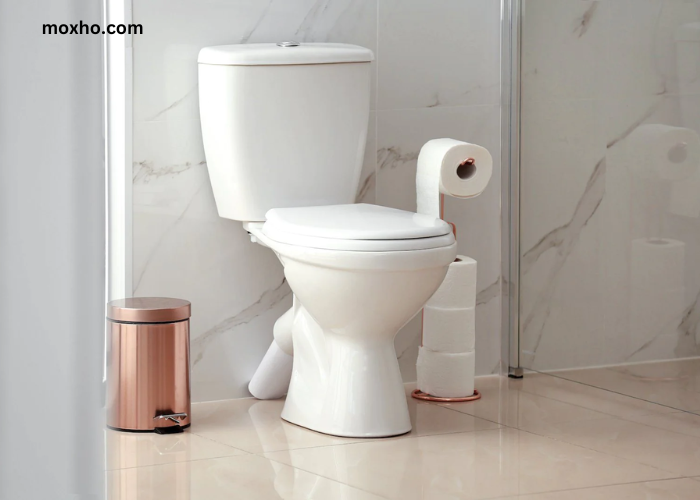Is your toilet taking forever to flush? Don’t worry, you’re not alone. A slow flushing toilet can be a frustrating and inconvenient problem to deal with. Fortunately, with a little know-how and the right tools, you can easily fix this issue yourself. In this article, we’ll explore the common causes of a slow flushing toilet, signs that indicate your toilet is flushing slowly, the tools and materials you’ll need for the job, and a step-by-step guide to fixing the problem. We’ll also discuss alternative methods for improving toilet flush performance, preventive measures to avoid future slow flushing issues, when to call a professional plumber for assistance, troubleshooting tips for persistent problems, and recommended products for maintaining a properly functioning toilet.
Methods for Improving Toilet Flush Performance
If the above steps didn’t completely solve your slow flushing issue, don’t worry. There are a few methods you can try to improve your toilet’s flush performance:
- Vinegar and Baking Soda: Pour a cup of vinegar into the toilet bowl and let it sit for a few hours. Then, add a cup of baking soda and let the mixture fizz for a while. Use a toilet brush to scrub the bowl and flush. This can help remove mineral deposits and improve water flow.
- Increase Water Flow: If your toilet has a water flow adjustment valve, try increasing the water flow to improve the flush. Consult your toilet’s manual for instructions on how to adjust the water flow.
- Upgrade to a High-Efficiency Toilet: If your toilet is old and inefficient, consider upgrading to a high-efficiency toilet. These toilets are designed to use less water while still delivering a powerful flush.
- Consider Professional Drain Cleaning: If you’ve tried all the DIY methods and your toilet is still flushing slowly, it may be time to call a professional plumber. They can perform a thorough drain cleaning using specialized tools and equipment.
How to Fix
Now that you’re fully prepared let’s walk through the step-by-step process of fixing your slow flushing toilet:
- Inspect the Drain Opening: Start by inspecting the drain opening in the toilet bowl. If you can see any visible debris or blockages, use a gloved hand or a small tool to remove them. If the blockage is deeper in the drain pipe, move on to the next step.
- Plunge the Toilet: Place the plunger over the drain opening and firmly press it down to create a seal. Pump the plunger up and down vigorously to create suction and dislodge the clog. Repeat this process several times until the water drains freely and the flush improves.
- Use a Toilet Auger: If plunging doesn’t solve the issue, it’s time to bring out the toilet auger. Insert the coiled end of the auger into the drain opening and crank the handle clockwise while applying gentle pressure. This will help break up or remove any stubborn clogs in the drain pipe.
- Check the Water Level: Once you’ve cleared any clogs, check the water level in the tank. It should be at least an inch below the overflow tube. If it’s too low, adjust the float or fill valve to increase the water level.
- Inspect the Flapper Valve: Lift the toilet tank lid and inspect the flapper valve. Ensure that it’s sealing properly and not worn out. If necessary, replace the flapper valve with a new one.
- Clean the Jet Holes: Using a wire brush or a small tool, clean the jet holes underneath the rim of the toilet bowl. Remove any mineral deposits or debris that may be obstructing the flow of water.
- Test the Flush: Finally, test the flush to ensure that the problem is resolved. If your toilet is flushing properly now, congratulations! You’ve successfully fixed your slow flushing toilet.
Remember to follow the manufacturer’s instructions when using any tools or replacement parts. If you’re unsure about any step or encounter difficulties along the way, it’s always a good idea to seek professional help.
When to Call a Professional Plumber for Assistance
While most cases of slow flushing toilets can be fixed by following the steps outlined above, there are situations where it’s best to call a professional plumber for assistance. Here are a few scenarios where professional help may be required:
- Persistent Clogs: If you’ve tried multiple unclogging methods and your toilet continues to flush slowly or gets clogged frequently, it’s a sign of a more serious issue. A professional plumber will have the knowledge and tools to diagnose and fix the problem.
- Sewer Line Blockage: If multiple fixtures in your home are experiencing drainage issues or if you notice foul odors coming from your drains, it could indicate a sewer line blockage. This requires immediate attention from a professional plumber.
- Old or Damaged Plumbing: If your home has old or damaged plumbing pipes, it may be causing the slow flushing problem. A professional plumber can assess the condition of your plumbing system and recommend the necessary repairs or replacements.
Remember, it’s always better to seek professional help if you’re unsure about any aspect of fixing your slow flushing toilet. They have the expertise and experience to handle complex plumbing issues.
Conclusion
Dealing with a slow flushing toilet can be a frustrating experience, but with the right knowledge and tools, you can easily fix the problem yourself. By understanding the common causes of a slow flushing toilet, recognizing the signs, and following the step-by-step guide provided in this article, you’ll be able to tackle the issue head-on. Remember to consider alternative methods, take preventive measures to avoid future problems, and seek professional help when necessary. With a properly functioning toilet, you can enjoy a hassle-free flushing experience every time.
